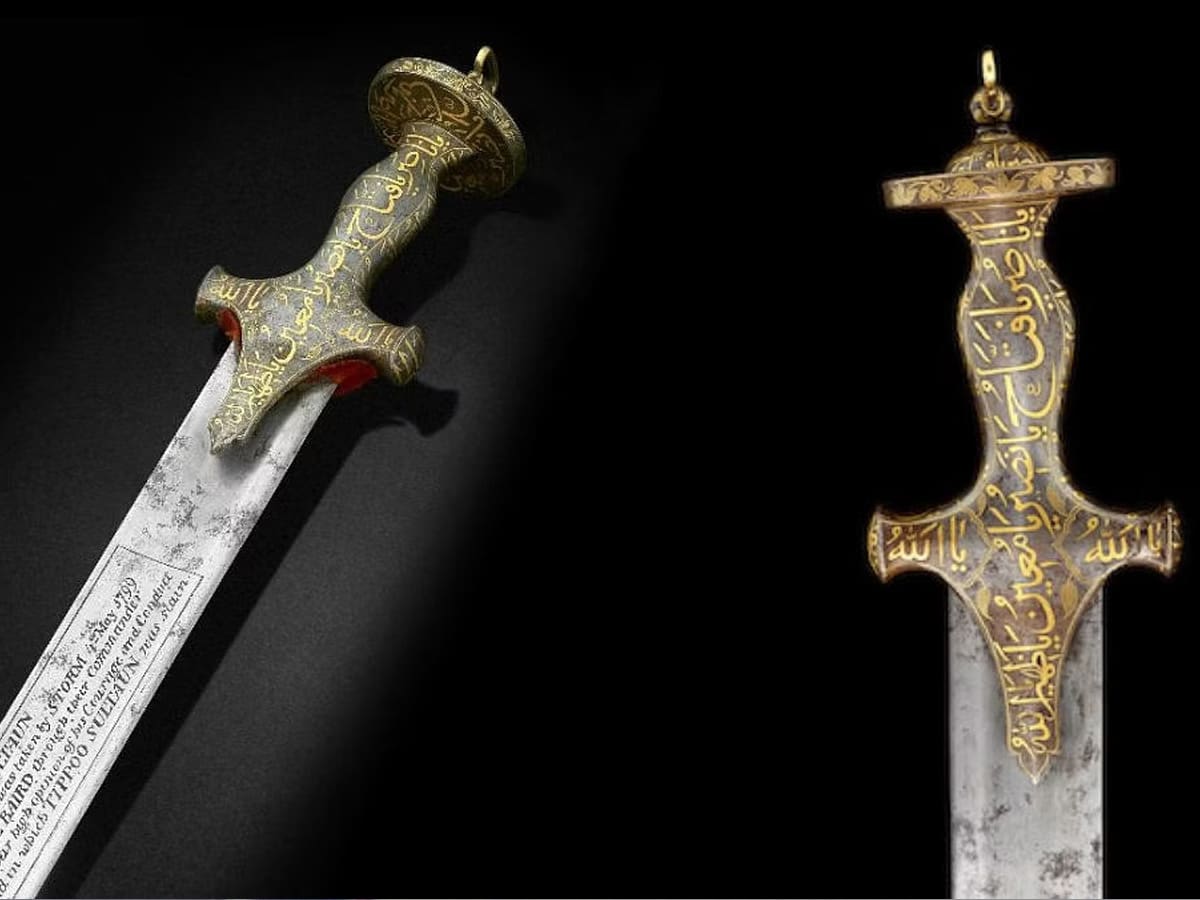
When Tipu Sultan died in battle on 4th May, 1799, the British forces found his body with his formidable sword still clutched in his hands. It was made of the finest and strongest Wootz steel and the Englishmen knew about this high quality product. The famous Damascus steel blade swords used during the Crusades were made from ingots of Wootz steel of India.
The swords were so sharp and strong that they could tear through the armours of rival soldiers. Indian craftsmen were adept at making these deadly swords which were famous throughout the world.
Sword of Salahuddin Ayyubi
According to legend when the English King Richard, “The Lionheart”, and his Muslim counterpart Salahddin (Salah ad-Din Yusuf ibn Ayyub) met on one occasion, they compared each other’s swords. Saladin took a silk handkerchief and let it gently slide along the blade of his sword. To the surprise of King Richard, the silken cloth fell to the ground neatly cut in half. Such was the razor sharp sword which was made of Damascus steel. Saladin’s army equipped with such exceptionally strong swords had an advantage over their rivals.
It is recorded in history that the swords which were famous during the Prophet Mohammed’s times are called Saif Al Hind (Saif in Arabic is a sword).
The word Wootz was used by Europeans to refer to the material which was originally called Urukku or Ukku or Uchchu in different regions of southern India. It could also have emerged from the Sanskrit word Utsa. According to the Encyclopedia Britannica, Wootz steel was produced by methods widely used in ancient India. The famous Damascus swords were made from this material Wootz. It originated in Tamil Nadu even before the birth of Christ and later spread to other regions of south India including Golconda. In fact Golconda later became a hub for manufacture and export of Wootz steel ingots to Arabia.
Damascus steel swords
Through trade, the Wootz was taken to Arabia and became the preferred material for making swords. From Wootz ingots were made the world famous Damascus steel swords.
According to a report in The Times of India published last year, the ceremonial sword of the Nizams, which was 700 years old, was also made from Wootz steel. It was probably made in the area around Nizamabad. The sword was made before the beginning of the Asaf Jahi dynasty but later came into the hands of the Asaf Jahi rulers. The sword was later gifted to Sir Archibald Hunter, commanding officer of the British armies in south India by the sixth Nizam Mir Mahboob Ali Khan and Prime Minister Maharaja Kishen Pershad.
For many centuries Damascus steel made a big difference in battles all over the world. Iranian weapon manufacturers also took Wootz from India and made their swords. It was called Pulad in Persia, Bulat in Russia and Bintie in China but all these names refer to the same material –Wootz from India.
Nizamabad steel
But about 250 years ago when India was under British rule, the technique of developing Wootz in India began to fade. There were several reasons for this. Firstly because the British brought steel from their own country and flooded the Indian market with their product. Secondly, more destructive weapons were invented for waging war and swords were no longer the crucial factor in winning battles. So there was no need to manufacture high-quality swords. The craftsmen and artisans who manufactured these swords took up other professions and the art faded away.
